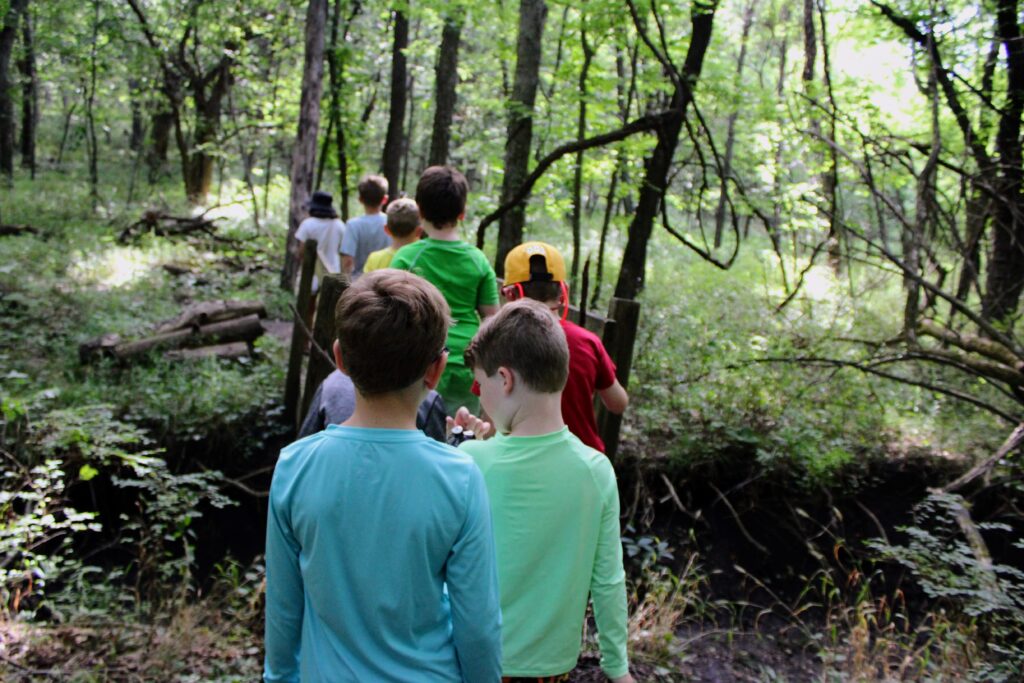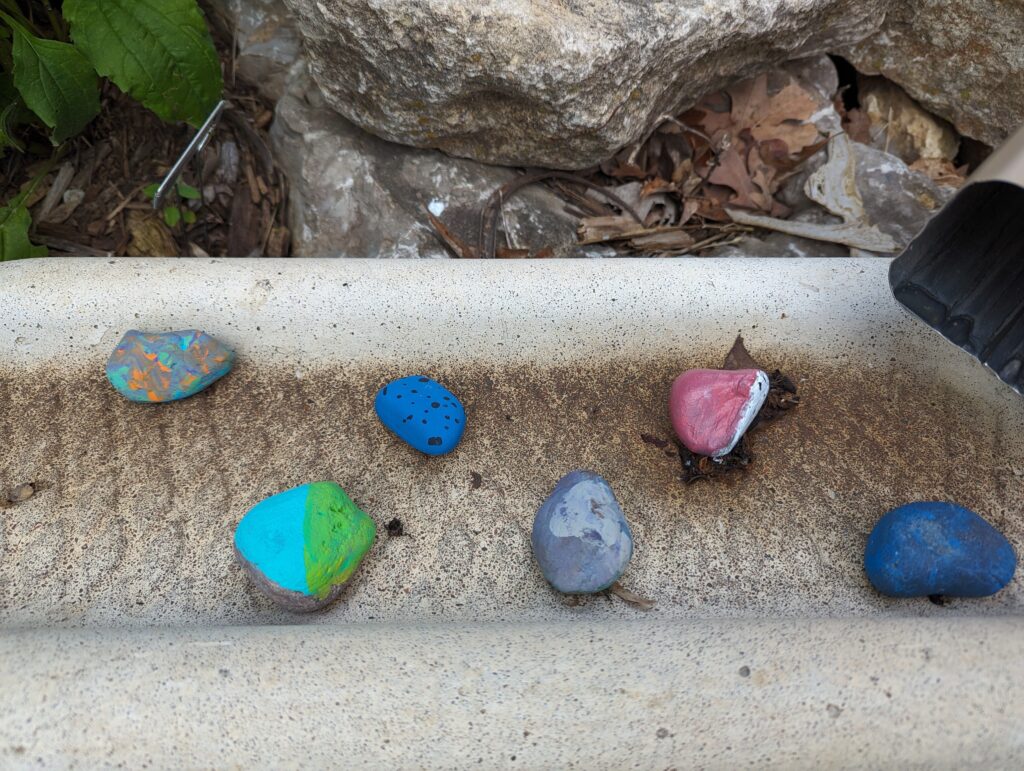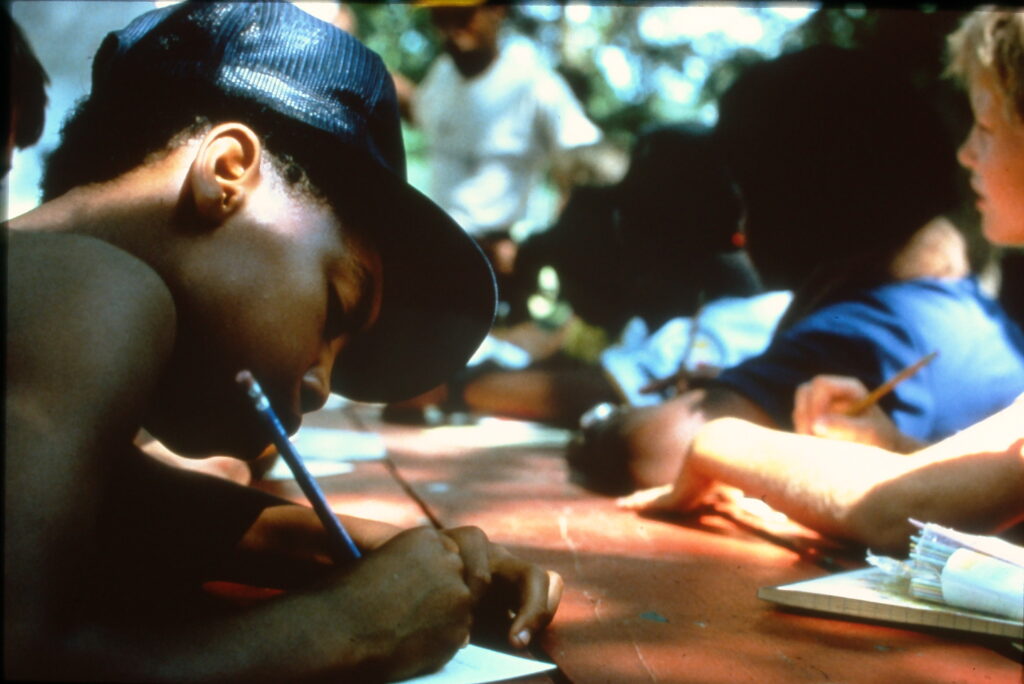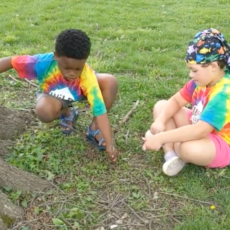It’s starting to get colder here at Wildwood, and we love doing outdoor mindfulness activities for when the temp drops.
This week, Wildwood experienced its first frost of the fall season. Shorter days and colder temperatures are upon the summer camp world.
For some of us, the colder months can prove to be more stressful and difficult than the summer months. Days are shorter and nights are colder. The cold outside can make us feel anxious, stuck, or even depressed. As advocates that kids (and grown ups) grow better outside, we want to share just how you can keep up with some outside mindfulness activities this chilly season!
What Is Mindfulness?
Mindfulness is any activity which helps us feel and exist in the present moment. It asks us to pay attention to our breathing, surroundings, and internal state without judgment. Put simply, mindfulness wants us to check in with ourselves and how we’re feeling.
The idea behind mindfulness is that paying attention to the present gives us a break from worrying about the future (like our never-ending to-do lists) or the past (what we could have done better yesterday, last year, etc). When we take a mindfulness break, we allow our bodies and minds to calm down–our hearts to beat more slowly, our breathing to be deep, our brain to clear. Finally, when we are calm, we are better able to take on challenges.
Mindfulness benefits adults and kids alike.
For adults, mindfulness practice can, among other things, help boost working memory (like that name your co-worker just told you), reduce stress, and lessen emotional reactivity to frustrations (like when you get stuck in traffic).
For kids, mindfulness helps them identify how they’re feeling and shake off some of the stresses of school or other activities. Practicing mindfulness can help enhance kids’ kindness, patience, impulse control and attention spans.
What Does Mindfulness Look Like?
Mindfulness can look different for everyone. Folks who are good at sitting still might find that meditation is how they enjoy practicing mindfulness. For others, it might look like paying attention to all of the flavors, sounds, textures, and smells that accompany eating a piece of candy. It might be blowing bubbles, filling in a coloring page or “square” breathing (in for 4, hold for 4, out for 4, hold for 4, repeat).
Google offers endless ideas, but whatever mindfulness looks like, the important thing is to get in tune with your senses and be present in the moment.
Mindfulness Activities We Like
1. Going for a walk
Going for a walk can make for a great mindfulness activity–whether its 10 minutes or an hour.
To maximize the benefits, wear comfortable clothes, decide how long you want to go, and plan a route where there’s not too much traffic (being uncomfortable can make it harder to focus on mindfulness).
Once you’ve made it outside (usually the hardest part), try a mindfulness game! Count or name all the sounds you hear. Name all of the things that are the same color, or all of the animals you see. For kids who need a list, you can try nature BINGO.
During the fall, we love listening to leaves crunching under our feet, the rustle of squirrels gathering nuts, wind in the trees, acorns plopping onto roofs. The more we listen, the more we notice.
If you feel safe where you’re walking, you can even put your phone on airplane mode to reduce distraction!

2. Cloud-stellations
Do you remember a time when the weather was lovely, and the sky was clear, and you just watched clouds in the sky? So do we!
We love to reconnect with our childhood selves and watch the clouds, deciding what each one looks like as it passes by. Is that one a top hat, a bunny, or a dragon? There is no wrong answer!
We call these “cloud-stellations.” Cloud watching is a great way to relax your body, connect with your creativity, and to feel more present in the moment.
To make the experience extra special, get dressed in warm, comfy clothes, lay a blanket outside, and make something warm to sip on. Then simply relax your body and let your creativity flow.
What shapes are the clouds taking today?

3. Painting Rocks
Painting rocks is another great way to reconnect with nature and your creativity.
First, spend a little time finding some small-ish rocks. You can look in your backyard, neighborhood, or at the local park. We like picking ones flat rocks that fit in the palm of our hand.
Wash and dry your rock(s) to remove dirt and debris.
Use acrylic paints to cover the rock. It’s even easier with acrylic paint markers like these. You can paint an abstract pattern, landscapes, words, animals–whatever feels right!
Last, find a place to for your rock to live. It might look best in a garden, a window, or it could even make a great homemade gift!

4. Nature Journaling
Nature journaling is a great way to get centered and stretch your imagination.
For this activity, you’ll need a notebook and something to write with.
Spend a little time outside and write about anything that stands out, or pick from a nature journal prompt like the ones below. Try writing for 5 minutes, and keep going if you like.
The best part about a nature journal is that there aren’t any rules. In addition to writing, a nature journal can include sketches, drawings, or anything else that you like!
Here are a few journal prompts we like:
- Write a diary entry from the perspective of a squirrel. What do they do when they wake up? Do they have a family? What do they do all day?
- Describe an object you find outside without using its name. What does an acorn look like? Feel like? Sound like?
- Imagine you lived in the great outdoors and you could build whatever kind of shelter or cabin you wanted. Describe what you’d build. Would it be a treehouse? Would you have a ladder? What would you build with?
- Make a list or draw all of the items you might find in a bird’s nest.

Want more mindfulness activities? Check out this blog post.



